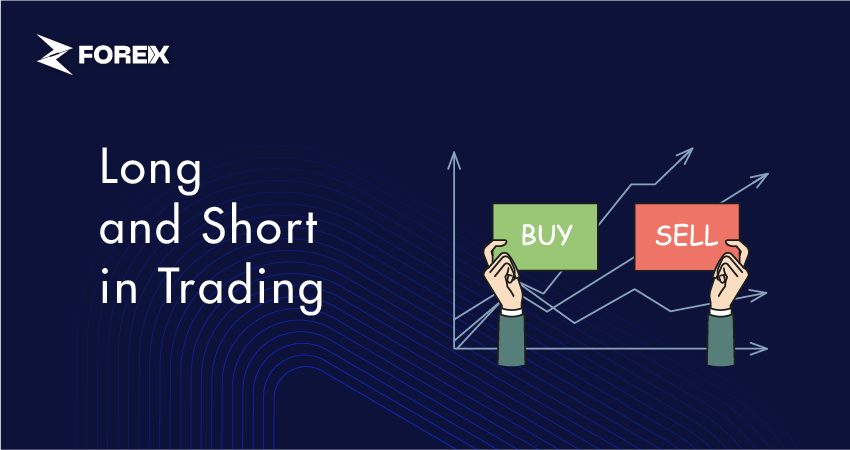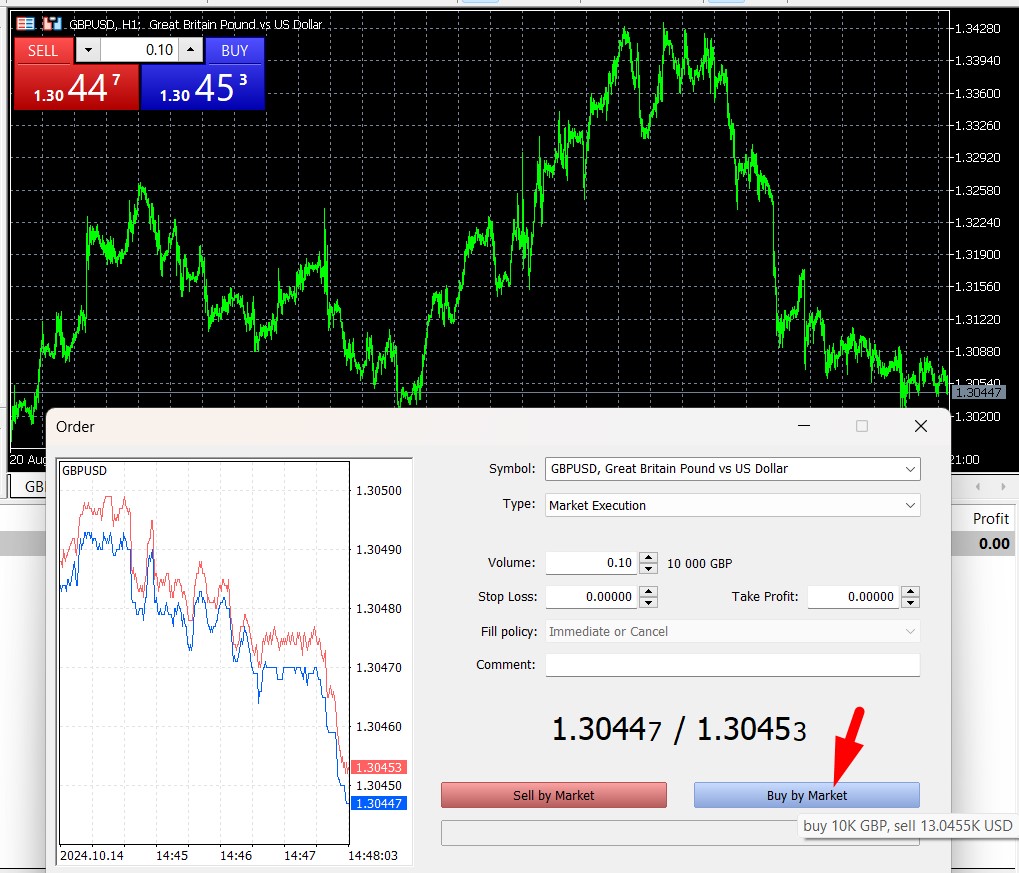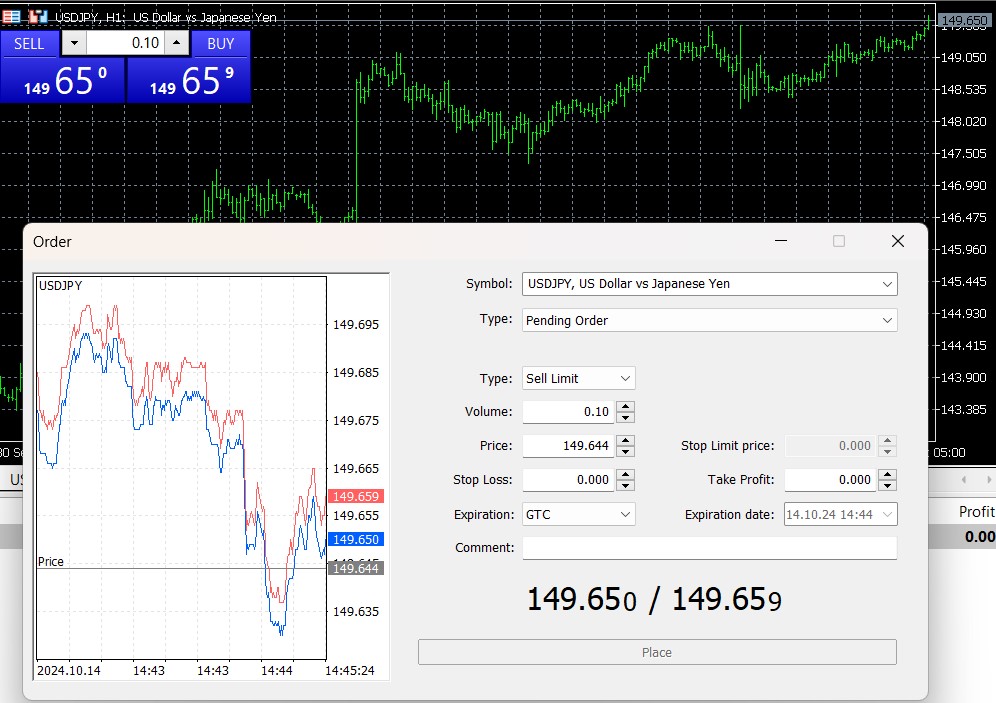
In trading, "long" and "short" positions are two basic strategies used by traders to make money based on their predictions of whether an asset's price will rise or fall.
When a trader takes a long position, it means they believe the asset’s price will go up. They buy the asset now, hoping to sell it later at a higher price and make a profit. On the other hand, a short position is taken when a trader expects the asset’s price to fall. In this case, they sell the asset first, with the plan to buy it back at a lower price and pocket the difference.
When you go long, you are buying the asset now with the expectation that its value will increase, allowing you to sell it later at a higher price for a profit. This is a straightforward strategy that aligns with the traditional concept of investing as buying low and selling high. It’s a common approach especially when traders are confident in the market’s upward trend.
If you believe the British pound (GBP) will strengthen against the US dollar (USD), you would go long on the GBP/USD currency pair. This means you’re buying pounds and selling dollars simultaneously, anticipating that the pound’s value will increase relative to the dollar. You can see a long position example below; means buying GBP and selling USD.

A short position, on the other hand, is used when a trader expects an asset’s price to drop. Instead of buying the asset, the trader sells it first and then plans to buy it back later at a lower price.
If you think the Japanese yen will strengthen against the US dollar, you would go short on USD/JPY. In this case, you’re selling dollars and buying yen, hoping that the dollar’s value will decrease relative to the yen, allowing you to buy it back at a lower price and make a profit.
You can see a short position example below; means selling JPY and buying USD.

In forex trading, having the ability to go long or short allows traders to potentially profit regardless of whether the market is going up or down.
Forex is unique because you are always trading one currency against another. This means you can go long or short on any currency pair depending on whether you think one currency will strengthen or weaken against the other.
For example, if you expect the euro to gain value against the dollar, you go long on EUR/USD. If you think the euro will lose value, you go short. This option to trade both directions gives forex traders many opportunities to profit, regardless of whether the market is trending up or down.
Trading long and short positions in forex requires a solid understanding of the market and price trends. Traders often use two main types of analysis to guide their decisions: Technical analysis (like reading charts) and fundamental analysis (such as reviewing economic data).
When you take a long position, you are betting that the currency will strengthen, possibly due to favorable factors like strong economic growth or rising interest rates. On the other hand, going short means you are expecting the currency to weaken, often because of negative news like political instability or poor economic performance.
To manage risk, traders also use tools like stop-loss orders, which help limit losses if the market moves against their predictions.
In forex trading, both long and short positions come with their own benefits and risks, and neither is inherently more dangerous than the other. It all depends on price movements and the way of your position. As long as you keep predicting market movements correctly, you can make more profit from your trades, whether they are long or short.
However, when it comes to traditional stock investing, the dynamics change. Buying stocks, or going long, is generally considered safer. This is because, over time, most stocks tend to increase in value as companies grow. Your potential loss is limited to the amount you’ve invested in that particular stock.
On the other hand, short selling a stock can be much riskier. If the price of the stock continues to rise, there’s theoretically no limit to how much you could lose. To manage this risk, short sellers often use tools like stop-loss orders to protect themselves from unexpected price jumps.
Shorting carries more risk than going long, especially while trading stocks. Because there’s no cap on how much its price can rise. Additionally, short selling involves borrowing the asset, which brings its own risks and costs.
What does it mean to go long in trading?
Going long means buying an asset, expecting its price to go up. For example, if you go long on EUR/USD, you believe the euro will rise in value compared to the US dollar.
What does it mean to go short in trading?
Going short means selling an asset first, expecting its price to fall. If you go short on EUR/USD means you believe the euro will drop against the US dollar, so you sell euros now to buy them back cheaper later.
Can you make money when the price falls?
Yes, you can make money by going short. If the price of an asset drops, you can buy it back at a lower price and keep the difference as profit.
Is going short riskier than going long?
Yes, shorting can be riskier because prices can rise indefinitely, which could lead to significant losses. Long positions are generally safer because your losses are limited to the amount you invested.
Can I go long and short on the same asset?
Some traders use strategies where they take both long and short positions on different parts of their portfolio and different market conditions. This can be useful for managing risk and balancing potential gains and losses. Also, that flexibility is one of the reasons why forex trading is so popular.
How do I decide whether to go long or short?
Deciding to go long or short depends on your analysis of the market. If you believe the price will go up, you go long. If you think the price will fall, you go short. In Forex, this means analyzing economic and political factors that influence currency values.
 QuickTrade in cTrader: How to Place Trades Faster
QuickTrade in cTrader: How to Place Trades Faster
QuickTrade is a built-in cTrader feature that allows you to place trades directly from the chart, without opening the full order ticket.
Detail A Practical Guide to cBots on cTrader
A Practical Guide to cBots on cTrader
Discover cBots in the cTrader ecosystem, how they are added and used through cTrader Algo, and what to pay attention to when selecting a strategy.
Detail cTrader Shortcuts: 15 Tips to Upgrade Your Experience
cTrader Shortcuts: 15 Tips to Upgrade Your Experience
This guide highlights 15 practical shortcuts and settings that upgrade your cTrader experience.
DetailThen Join Our Telegram Channel and Subscribe Our Trading Signals Newsletter for Free!
Join Us On Telegram!